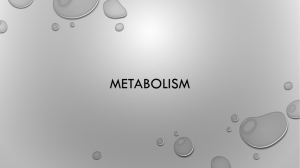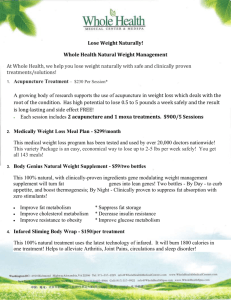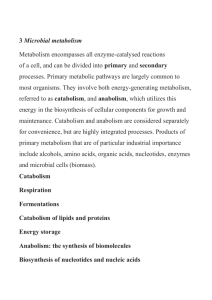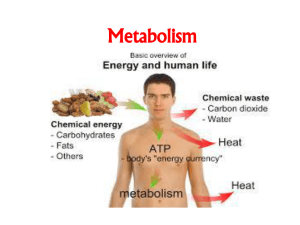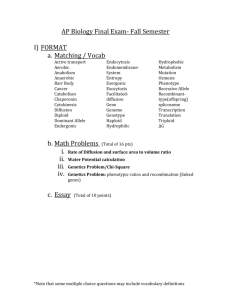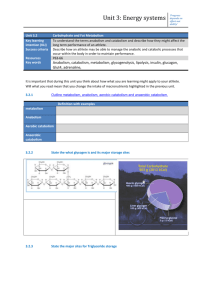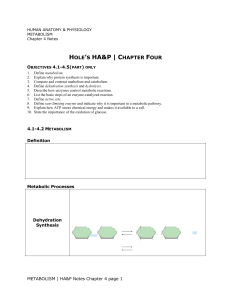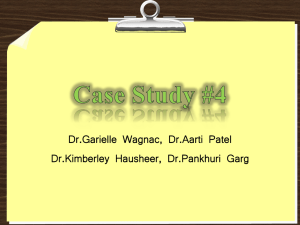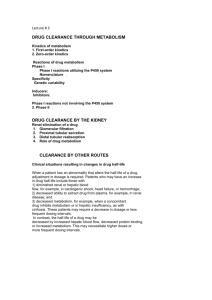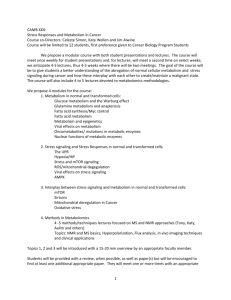Metabolism Notes
advertisement
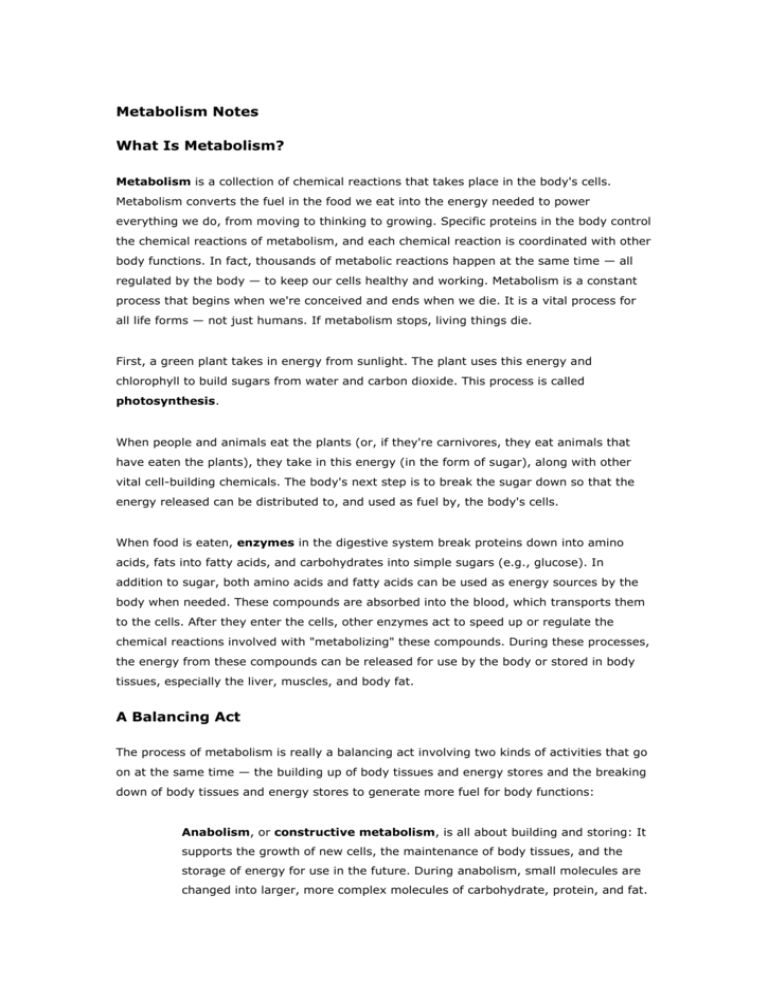
Metabolism Notes What Is Metabolism? Metabolism is a collection of chemical reactions that takes place in the body's cells. Metabolism converts the fuel in the food we eat into the energy needed to power everything we do, from moving to thinking to growing. Specific proteins in the body control the chemical reactions of metabolism, and each chemical reaction is coordinated with other body functions. In fact, thousands of metabolic reactions happen at the same time — all regulated by the body — to keep our cells healthy and working. Metabolism is a constant process that begins when we're conceived and ends when we die. It is a vital process for all life forms — not just humans. If metabolism stops, living things die. First, a green plant takes in energy from sunlight. The plant uses this energy and chlorophyll to build sugars from water and carbon dioxide. This process is called photosynthesis. When people and animals eat the plants (or, if they're carnivores, they eat animals that have eaten the plants), they take in this energy (in the form of sugar), along with other vital cell-building chemicals. The body's next step is to break the sugar down so that the energy released can be distributed to, and used as fuel by, the body's cells. When food is eaten, enzymes in the digestive system break proteins down into amino acids, fats into fatty acids, and carbohydrates into simple sugars (e.g., glucose). In addition to sugar, both amino acids and fatty acids can be used as energy sources by the body when needed. These compounds are absorbed into the blood, which transports them to the cells. After they enter the cells, other enzymes act to speed up or regulate the chemical reactions involved with "metabolizing" these compounds. During these processes, the energy from these compounds can be released for use by the body or stored in body tissues, especially the liver, muscles, and body fat. A Balancing Act The process of metabolism is really a balancing act involving two kinds of activities that go on at the same time — the building up of body tissues and energy stores and the breaking down of body tissues and energy stores to generate more fuel for body functions: Anabolism, or constructive metabolism, is all about building and storing: It supports the growth of new cells, the maintenance of body tissues, and the storage of energy for use in the future. During anabolism, small molecules are changed into larger, more complex molecules of carbohydrate, protein, and fat. Catabolism, or destructive metabolism, is the process that produces the energy required for all activity in the cells. In this process, cells break down large molecules (mostly carbohydrates and fats) to release energy. This energy release provides fuel for anabolism, heats the body, and enables the muscles to contract and the body to move. As complex chemical units are broken down into more simple substances, the waste products released in the process of catabolism are removed from the body through the skin, kidneys, lungs, and intestines. Several of the hormones of the endocrine system are involved in controlling the rate and direction of metabolism. Thyroxine, a hormone produced and released by the thyroid gland, plays a key role in determining how fast or slow the chemical reactions of metabolism proceed in a person's body. Another gland, the pancreas secretes hormones that help determine whether the body's main metabolic activity at a particular time will be anabolic or catabolic. For example, after eating a meal, usually more anabolic activity occurs because eating increases the level of glucose — the body's most important fuel — in the blood. The pancreas senses this increased level of glucose and releases the hormone insulin which signals cells to increase their anabolic activities. Once the energy from the food is released into our body it will be used up gradually. There are three places this internal energy can go—to heat transfer, to doing work, and to stored fat. Our body provides a good example of irreversible processes. Although body fat can be converted to do work and produce heat transfer, work done on the body and heat transfer into it cannot be converted to body fat. Summary of 4 stages Eating The body metabolizes all the food we consume. Eating increases the internal energy of the body by adding chemical potential energy Catabolism Catabolism is the pathway that breaks down molecules into smaller units and produces energy. Anabolism Anabolism is the building up of molecules from smaller units. Anabolism uses up the energy produced by the catabolic break down of your food to create molecules more useful to your body. Internal energy Our body loses internal energy, and there are three places this internal energy can go—to heat transfer, to doing work, and to stored fat (a tiny fraction also goes to cell repair and growth). As shown in Fig 1 heat transfer and doing work take internal energy out of the body, and then food puts it back. If you eat just the right amount of food, then your average internal energy remains constant. Whatever you lose to heat transfer and doing work is replaced by food, so that, in the long run, ΔU=0. If you overeat repeatedly, then ΔU is always positive, and your body stores this extra internal energy as fat. The reverse is true if you eat too little. If ΔU is negative for a few days, then the body metabolizes its own fat to maintain body temperature and do work that takes energy from the body. This process is how dieting produces weight loss.
